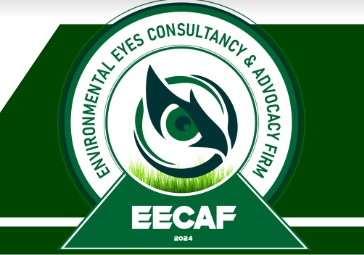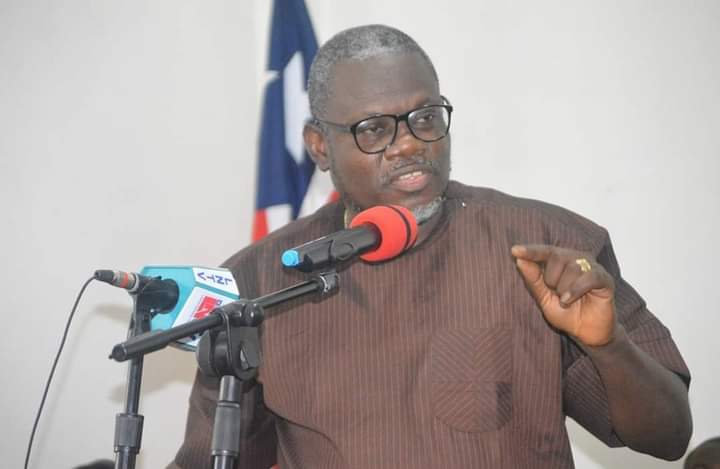IPNews-Monrovia: At least 14 million United States dollars were spent for the construction of a new office complex of the National Social Security & Welfare Corporation located on 24th street, and the NASSCORP House Complex at the ELWA junction, respectively in violation of an existing regulation prohibiting such Expenditure.
According to Section 64 (d) of the National Social Security & Welfare Corporation-NASSCORP, on investment regulation promulgated 1988, entitled ‘Investment of Reserve’ states: “not more than 25% of the Reserves shall be invested in real estate including buildings occupied by the corporation”.
A GAC audit report for fiscal year 2013/2014, 2014/2015 and 2015/2016, identified that NASSCORP’s Investment in Properties exceeded the required 25% of total reserve during those financial periods.
Additionally, the current ratio of 38.765% upon which the disbursement was made does not maximize liquidity and yield in accordance with the Investment Policy and Key Strategies Guide of 2008.
The risk assessment of the project, especially the concentration of investments in investment property was predicted to result in a high liquidity risk and low yield in the short and long term which may affect the payment of pension liabilities, yet the Management & Board of Directors paid not attention.
According to studied review of the GAC report, it is revealed that the General Auditing Commission-GAC, recommended that Management of NASSCORP diversify its investment portfolio, with full consideration of ‘reserve threshold’.
Contrary to the GAC recommendation, authorities at the National Social Security & Welfare Corporation, argued that the specific points highlighted in the GAC report, particularly Section 64(d) of NASSCORP Corporate Regulation (1988), for the adherence to the provision laid down in Section 64(d) limits the investment of Reserves in real estate including the buildings occupied by the Corporation to 25% of the Reserves of the Corporation.
Also, NASSCORP contends that the issue of the Regulations has been discussed extensively by the Board of Directors since 2010. The Board has considered and acknowledged this provision to be obsolete and impractical in consideration of the growth of the fund and the intent and purpose for which it was made. Additionally, with the spirit of growth the Board of Directors proceeded to approve new investments such as the construction of the NASSCORP House Complex at the ELWA junction and the new Corporate Headquarter at 24th Street both of which exceeds US$14 million.
Ironically, the Board of Directors without fear and respect of the 1988 Corporate Regulation along with other provisions therein, approved this new spending, contrary to best and acceptable standards that the existing law be revised or repealed before authorizing such disbursement.
A GAC Audit report in the possession of IPNews established that following the high expenditure of 38.765%, the Board of Directors authorized the roll-out of a reform process in 2017, which did not take effect until 2018.
As a testimonial to this paper report, the National Social Security & Welfare Corporation-NASSCORP, held a two-day interactive forum for employees of the private and public sectors on March 21, 2018, at a resort in Monrovia, according to a press release at that time.
It may be recorded, the press release issued on that March 21, 2018, stated that the day one of the event would be dedicated to educating the public sector employers and employees, while the next day will focus on the private sector, including the new NASSCORP Act.
It can be recalled that on December 27, 2016, the Legislature passed an Act repealing Decree No. 14 of the People’s Redemption Council (PRC) of the Armed Forces of Liberia and creating a new Chapter 89 of the Executive Law establishing the National Social Security and Welfare Corporation of the Republic of Liberia. The Act was approved by then President Ellen Johnson Sirleaf on February, 2017 and printed into handbill, contrary to assertions mentioned by the management of NASSCORP that its decision to approved the 14 million by the Board was in keeping with law and consistent with the Board’s resolution .
The Act, the release said, increased the contribution rates and broadened the coverage of NASSCORP to include the President and Cabinet, the Legislature, the Judiciary and members of the para-military forces to include officers of the Liberian National Police and the Liberia Immigration Service, etc.
Another significant issue identified during the GAC report which still remain unclear whether the Management of NASSCORP produced the balances of fixed assets for the years July 1, 2012 and June 30 2013, which were never verified by auditors of GAC.
GAC stated in its response that during the audit noted improper management of the fixed asset register as follows: 1. The fixed asset register was not properly maintained for all fixed assets of NASSCORP. Some assets on the register did not have serial numbers. Assets in the fixed asset register were not coded. There was no mechanism of tracing assets from the physical location to the register and from the register to the physical locations.
Furthermore, GAC identified that the variances between the fixed asset register and the fixed asset ledger. Reconciliation was not performed between the fixed asset register and the general ledger, including a difference of US$24,192.32 between the fixed asset register and balance for fixed assets in the financial statements.
However, NASSCORP Management Letter stated that Management would ensure that an up to date fixed asset register which were being developed and tested in 2014 in line with the recommendation of the External auditors.
Significantly, Part V of the Public Financial Management (PFM) regulations of the PFM Act, 2009 requires that a master inventory be maintained for fixed assets. The master inventory shall record under each category of item, the date and details of the vouchers on which the items were received or issues, the serial numbers and the distribution.
Another issue of importance, is violation of Section A.9 of the PFM Regulations of 2009, which requires that any officer signing a document or record pertains to accounts in a way to ensure that the signature is given in such a way as to preclude subsequent altercation or addition to the information.
However, during GAC field verification of the regional offices, it was identified that some contributors’ payrolls, on which contributions were calculated by the entities and submitted for payment, did not have evidence of authority from the head of the institutions or its designated heads.
Additionally, GAC recommended that the Management of NASSCORP justify its failure to ensure that all payrolls received from contributors were properly authorized by designated heads of the contributing entities, including demonstration of controls in to ensure that all deductions made by companies are remitted to NASSCORP, which is yet to be done according to multiple sources.
Section A.9 of the PFM Regulations of 2009 requires that any officer signing a document or record pertains to accounts in a way to ensure that the signature is given in such a way as to preclude subsequent altercation or addition to the information, which was never ahead to.
Meanwhile, the Auditor General says it has discretionary powers to select audits, in variance to with a June 2005, Act passed by the National Legislature of Liberia amending Chapter 53.2 of the Executive Law of 1972, which grants the General Auditing Commission the status of autonomous agency of Government; places Chapter 53, Section 53.1 of the Executive Law in compliance with Article 89 of the 1986 Liberian Constitution, which provides that the General Auditing Commission once a year, shall perform audits of all Government agencies and Government organizations and examines, to the extent he or she deems necessary, all transactions and accounts relating to the receipt, disbursement, and utilization of public monies.
However, GAC in a reactionary press release to the Independent Probe Newspaper article captioned “Collusion! GAC, NASSCORP-NEC On Bed of Roses, As unaccounted wealth hangs in the balance PART I’, the GAC stated that contrary to the legal provisions cited in the aforementioned publication (all of which have were repealed by the signing into law of the GAC Act of 2014), Section 2.1.3 (c) of the GAC Act of 2014, gives the Auditor General discretionary powers to select audits, states that “the Auditor General shall have the right to determine which audits are to be carried out, to select the type of audit to be carried out, when to carry them out and report the findings.
The GAC also indicated that it conducts audits on the basis of the availability of resources and not what they perceive about the conduct of audits, contrary to revised 2005 of 2014, outlining the mandate and powers of the General Auditing Commission-GAC.
The GAC reaction comes on the back of IPNews FOI inquiries on the continue silence of the General Auditing Commission on auditing the books of public institutions in the wake of diet cries for straight adherence and utilization public resources.
Ironically, the GAC failed to establish what it meant when it says ‘GAC conducts audits on the basis of the availability of resources and not what they perceive about the conduct of audits’, when it continues to have government appropriations and allotments since it has ended rounds of audits on both the National Social Security & Welfare Corporation-NASSCORP and the National Elections Commission-NEC.
For more on this developing story, stay log onto www.independentprobe.com ; Facebook: The Independent Probe Newspaper; Twitter: Independentprobe, Linkedin: Independentprobe.
This article was brought to you by the project: “Transparency and Accountability in the Public Sector”, with focus: “Following the Money”, With support from OSIWA







